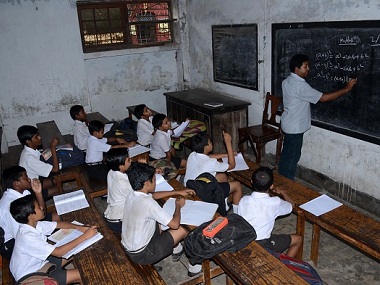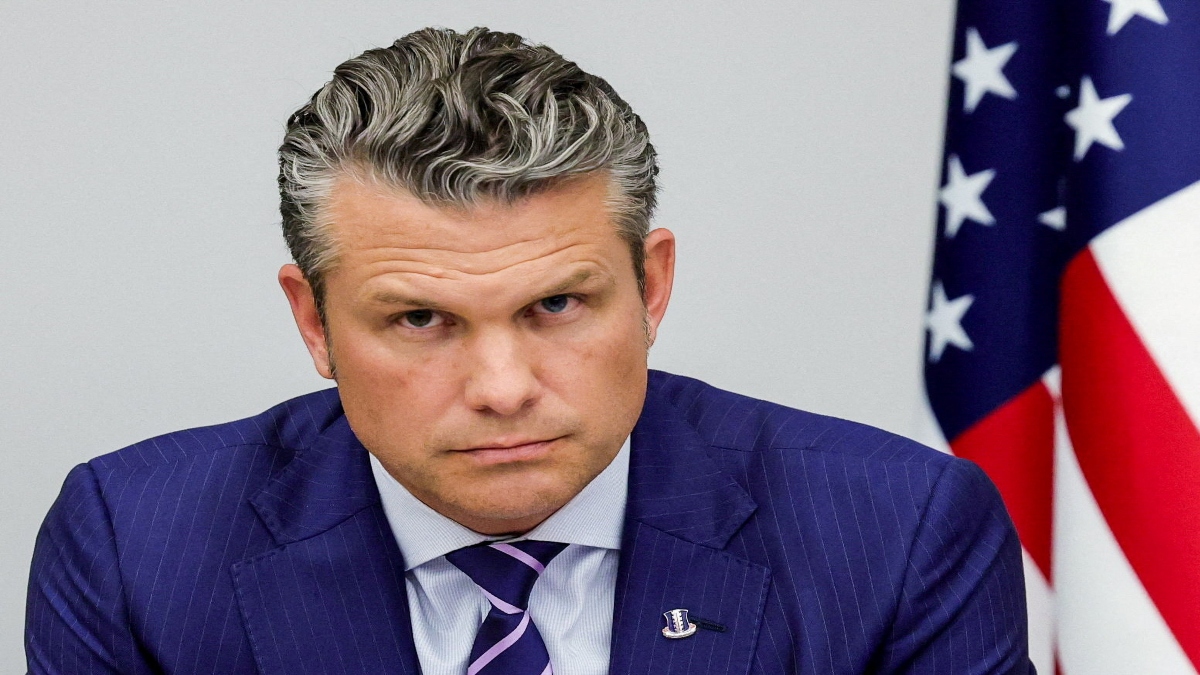By Tish Sanghera Mumbai: Poor quality education and the relatively high prevalence of certain diseases amongst the population means India is risking its future economic growth by underinvesting in two key areas important for workforce productivity, according to a new study. Indians work for just six-and-a-half years at peak productivity (compared to 20 years in China, 16 in Brazil and 13 in Sri Lanka), ranking 158th out of 195 countries in an international ranking of human capital in the study by the
Institute of Health Metrics and Evaluation, published in
The Lancet, a global journal. [caption id=“attachment_5259681” align=“alignleft” width=“380”] Representational image. Getty images[/caption] Human capital is a measure of the education and health levels in a population, expressed as the number of expected years lived between the age of 20 and 64. It is considered an important determinant of economic growth. By taking into account life expectancy, functional health, years of schooling and education quality, the quality of labour generated within a country can be estimated, compared with other nations and areas for increased investment focus identified. Finland retains its top ranking with 27 years of human capital, while Niger, South Sudan and Chad feature at the bottom with no more than two years each, showing vast levels of inequality globally. The US, a formerly high ranking nation, has fallen 21 places from sixth to 27th position, due partly to a lack of improvement in years of education attained, the study showed. “Our findings show the association between investments in education and health and improved human capital and GDP (gross domestic product) – which policymakers ignore at their own peril,” said Christopher Murray, director of the Institute for Health Metrics and Evaluation (IHME) at the University of Washington. “As the world economy grows increasingly dependent on digital technology, from agriculture to manufacturing to the service industry, human capital grows increasingly important for stimulating local and national economies.” Though Indians are spending an extra four more years in school compared to almost two decades earlier in 1990, the country had the second lowest score for education quality in South Asia in 2016 (66 out of a possible 100, just ahead of Afghanistan’s 64). Equally, while the number of years that Indians work between the age of 20 and 64 has increased by seven years (from 36 to 43), the workforce is the unhealthiest in South Asia, with the lowest functional health score in the region (43 out of a possible 100, behind Afghanistan with 45). While India’s rank has improved from 162nd place in 1990 to 158th in 2016, and the number of years worked at peak productivity risen from three to seven, the country has ranked in between Sudan (157th) and Namibia (159th) – both countries with significantly lower GDP than India ($117 billion and $13 billion respectively, compared to India’s $2.6 trillion). This means that India, Sudan and Namibia have similar levels of human capital – defined by the World Bank President, Jim Yong Kim, as “the sum total of a population’s health, skills, knowledge, experience, and habits”. The
World Bank had last year requested IHME to develop a measure of human capital, that would help enable global comparisons over time and equip governments with the insights into where critical health and education investments are needed. Poor health status impacting on productivity Though Indians in 2016 could expect to live five years longer between the ages of 20 and 64 than in 1990, a low functional health score of 43/100 means these productive years are more likely to be affected by ill health. The prevalence of seven conditions that impact upon learning and productivity – including stunting, wasting, anaemia, cognitive impairments, hearing and vision loss and infectious diseases such as HIV/AIDS, malaria, and tuberculosis – were measured to produce a composite functional health score, according to the study. India had the lowest health score in 2016 among South Asian countries at 43, the same figure that Pakistan registered 16 years earlier, in 1990. Nepal, a country with significantly lower per capita income than India ($835 compared to India’s $1,939) made the biggest improvement – increasing its functional health score by 28 percent over a 16-year period – followed by Bangladesh (22 percent), Sri Lanka (21 percent) and then India (18 percent). Pakistan and Afghanistan registered smaller increases (5 percent and 9 percent, respectively) but their health scores remain higher than India’s. Amongst the BRICS countries, India and China both showed a 18 percent higher health score in 2016 compared to 1990. However, India’s score (43) remains notably lower than China’s (72) and almost half of Brazil’s (78), the group leader. The effects of poor health on a workforce productivity are well documented. A 1 percent loss in adult height due to childhood stunting is associated with a 1.4 percent loss in economic productivity, according to World Bank estimates. Stunted children earn 20 percent less as adults compared to non-stunted individuals, IndiaSpend
reported in January 2018. More time spent in a poor quality education system While Indians are spending 68 percent more time in school (six years in 1990 compared with 10 years in 2016), education quality has increased only marginally (5 percent over the same period), indicating that the extra years of schooling may be going to waste. Education quality is determined through analysis of average student scores on internationally comparable tests, to produce a composite score out of 100, the study said. India has the second-lowest education score (66/100) amongst its South Asian counterparts, slightly ahead of Afghanistan (65) and far behind the group leader, Sri Lanka (75). Sri Lankans also spend the most years in school (13), as was the case in 1990, followed by Indians (10). Afghanistan has managed to produce the biggest increase in education attainment, increasing the number of years spent in education from an incredibly low two years in 1990, to seven in 2016 – a 232 percent increase.
Source: Measuring human capital: a systematic analysis of 195 countries and territories, 1990–2016, The Lancet
Russia has the highest score for education quality amongst the BRICS nations (90/100), with students spending 12 years in school – same as Brazil and South Africa. Chinese students spend the longest time in school at 13 years and experience a high level of education quality, scoring 89 out of a possible 100.
Source: Measuring human capital: a systematic analysis of 195 countries and territories, 1990–2016, The Lancet
India’s low education score can be easily understood, amongst the current climate of teacher shortages, poor assessment and funding cuts, IndiaSpend reported in January 2018 While the country has one of the world’s youngest populations, with a median age of 27 years, and is well positioned to benefit from an economic dividend – the growth potential a country enjoys when its population has a high share of those in the working age – a lack of investment in education means it’s likely the opportunity could be wasted. Human capital’s impact on GDP An increase in a country’s human capital seems to be associated with faster economic growth, the study has shown. Those countries in the top 25 percent of human capital improvement between 1990 and 2016 also registered 1.1 percent higher annual GDP growth rate than those in the bottom 25 percent of human capital improvement. This positive correlation also suggests that nations failing to invest in health and education are at risk of stagnating economies and lower per capita GDP. Low-income and middle-income countries in particular are falling short in investments in human capital, the World Bank has previously stated.
“Investing in people rather than primarily in infrastructure is the best way to achieve sustainable development, and investments in human capital through health and education offer compelling returns,” said Tedros Adhanom Ghebreyesus, WHO Director-General. India’s public health expenditure is among the lowest in the world at 1.02 percent of GDP (2015), far behind the 5 percent recommended by experts and other low-income countries that average 1.4 percent of GDP. Increasing public-health spending to 2.5 percent of GDP was a stated aim in The National Health Policy 2017, but India is yet to meet its 2010 target of 2 percent of GDP, IndiaSpend reported in April 2017. Government spending on education as a proportion of GDP is similarly low in India, at 2.7 percent in 2017-18, compared with 3.3 percent in China and 5 percent in Mauritius. In 1964, the Kothari Commission had recommended a 6 percent allocation of GDP to education spending, in line with the global policy advice given by UNESCO. Sanghera is a writer and researcher with IndiaSpend


)

)
)
)
)
)
)
)
)



